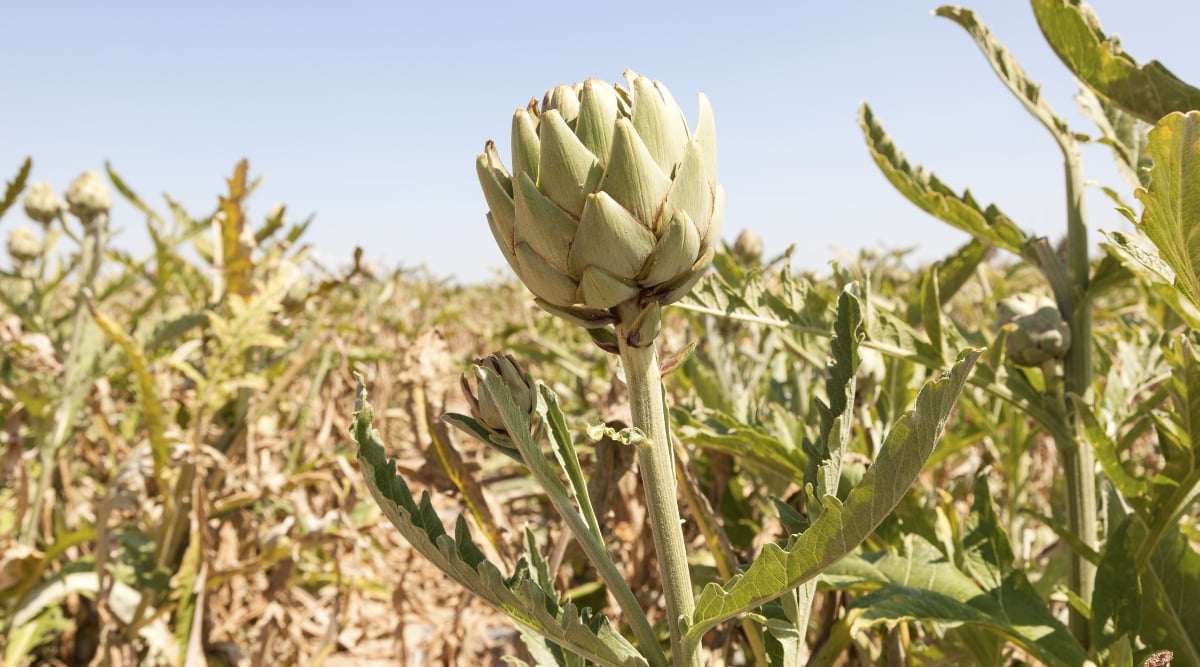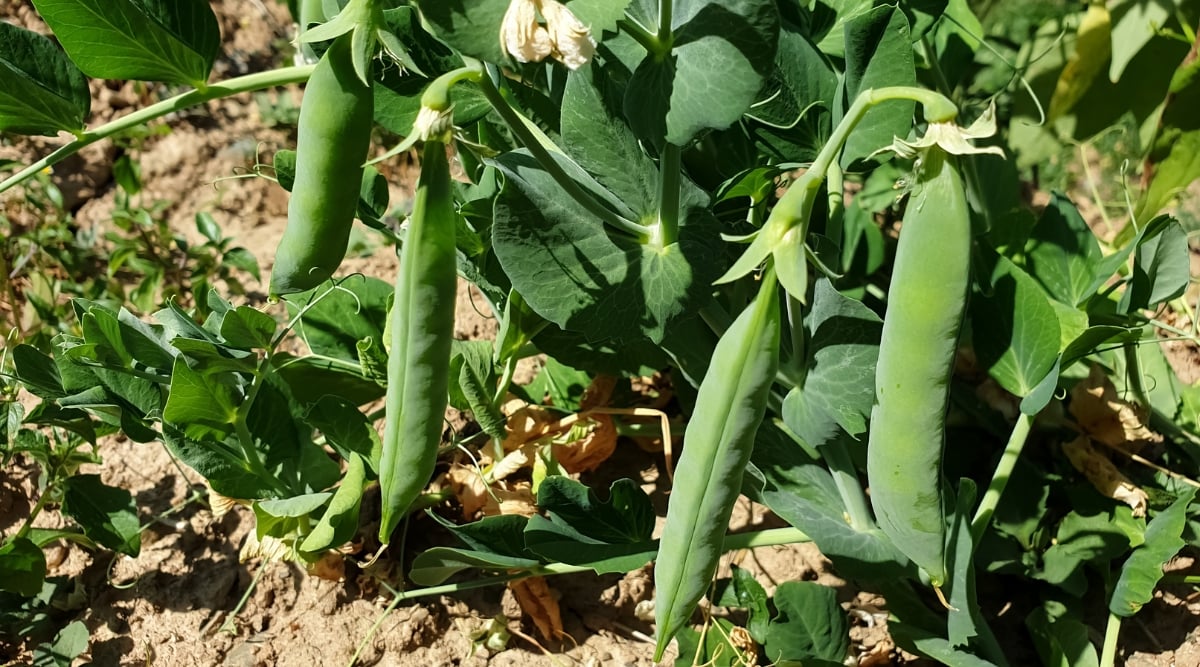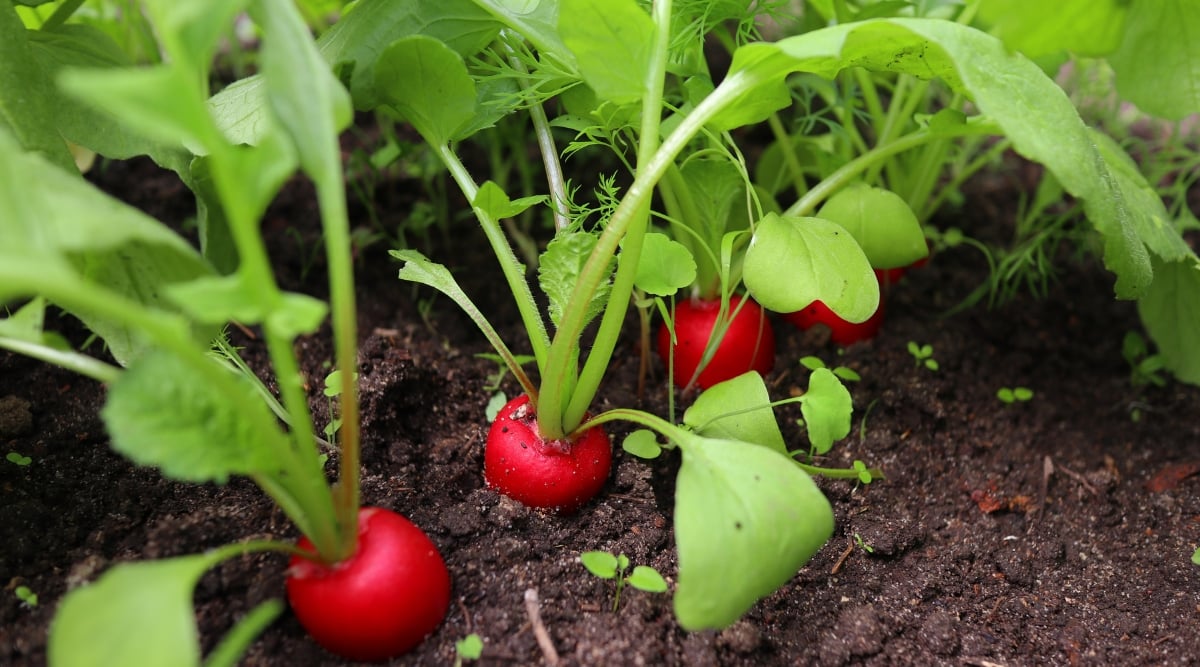15 Companion Vegetation to Develop with Artichokes
Artichoke crops are consideration seekers. They will develop pretty tall and vast, have an interesting-looking flower bud, and bloom into a stunning purple flower that pollinators can’t get sufficient of. Although they like being the focus, you possibly can develop many companion crops with artichokes.
You’ll have to preserve spacing in thoughts if you develop artichokes. The crops are massive and may solid fairly a little bit of shade once they’re mature, so that you have to be cautious of shading out different crops. Even so, there are a number of nice choices you possibly can select from, and plenty of of them will pair properly on the plate.
Let’s leap into companion planting and which crops will develop with artichokes so you are able to do essentially the most in your backyard. Right here, we’ll share 15 companion crops that develop properly with artichokes!
What’s Companion Planting?


Companion planting is if you plant completely different plant species collectively in a backyard to allow them to profit one another. Vegetation have pest and illness issues, however some species can repel what ails one other. By inserting them collectively, you possibly can relieve pest pressures in your backyard.
If you plan out your backyard to make sure every part works collectively, it can save you a number of sources. You may save time, house, and cash on pest management.
Three Sisters Technique


Essentially the most well-known instance of companion planting is the Three Sisters technique. Corn, beans, and squash are all planted collectively and assist one another out. Corn offers a trellis upon which climbing beans can develop, beans present nitrogen, and squash turns into a residing floor cowl to maintain the soil moist.
Whereas the Three Sisters technique doesn’t work with artichokes, it’s a superb instance of how companion crops stay harmoniously with one another and profit their neighbors.
Artichokes as Companion Vegetation
Although artichokes demand a number of house, you possibly can plant different crops close by with a bit of planning. Earlier than selecting your pairs, it is advisable know the great and the unhealthy artichokes have as a neighbor.
Advantages


Artichokes are perennial crops in USDA zones 7-11. You’ll be able to preserve them in your backyard and allow them to return annually for about six years earlier than they cease producing flowers. Artichokes are a good selection in the event you stay in a heat zone and like to maintain your crops for some time.
Entice Pollinators


For those who enable a few of your artichokes to bloom, you’ll see the distinctive fantastic thing about the thistle-like flowers. They develop to be vibrant purple and bloom from the middle of the bud. The artichoke is now not edible when it flowers. You too can see the flowers in an artichoke earlier than it blooms because the inedible fuzz on the heart of the artichoke’s coronary heart.
Though the plant is inedible as soon as it blooms, you’ll have many pollinators. Bees, butterflies, and different critters love the large purple thistle blooms. These pollinators are useful to the ecosystem of the backyard.
Container Vegetation


Artichokes make nice container crops, making them versatile to work with. If house is a matter in your backyard, preserve artichokes in a container close to their companions.
They received’t get the soil advantages from some companion plant species, however they will nonetheless profit from pollinators and different crops which will repel or draw away pests. Simply ensure that when planting artichokes in containers, the pots are massive sufficient and have sufficient soil to accommodate the massive root system the plant produces.
Disadvantages
Although planting artichokes within the backyard has many benefits, there are some things to contemplate. There are issues to plan round, resembling how large they will get, how a lot water they want, and deterring the pests they appeal to.
Area


Artichokes take up a number of room. They will attain as much as 4 toes tall and vast, which can restrict what you possibly can plant with them in case you have restricted floor house.
As talked about above, you possibly can plant artichokes in containers. This manner, you possibly can transfer them once they get too large for the backyard, and your crops nonetheless get the advantages.
Water Necessities


Artichokes may be tough to look after in dry areas as a result of they require a lot water. They’re heavy feeders and wish persistently moist soil. Relying on the climate, a deep watering 2-3 instances every week is good.
In the course of the peak of summer season, you’ll have to water them extra typically to maintain them comfortable. Drip irrigation can be your greatest pal in sizzling circumstances!
Pests


There are fairly a number of pests and ailments that would goal your artichokes. They’re not essentially extra liable to issues, however having extra potential points raises the general threat.
Regulate your crops and take note of what pests their companions cope with so you may make plans to reduce their unfold. Prevention is far simpler than coping with an infestation!
Companion Vegetation for Artichokes
Let’s check out some companion crops that develop properly with artichokes.
Arugula


Arugula wants full solar in cool climate however welcomes shade because the climate warms up, making it a superb companion for artichokes. The shallow root system received’t compete with artichoke roots, and also you’ll probably harvest the arugula earlier than the 2 have an opportunity to have issues.
Arugula attracts hoverflies when it flowers, and hoverflies eat the aphids that like to focus on artichokes. Depart some arugula behind to let nature work its magic and assist preserve your aphid inhabitants down.
Asparagus


Asparagus is a perennial plant that can take no less than two years to develop earlier than you possibly can harvest from it. Since artichokes are perennials in heat climates, you possibly can plant these two close to one another and allow them to get comfy for some time.
Asparagus may be harvested from late spring to early summer season, and artichokes are harvested in spring and fall. Nonetheless, it’s greatest if these two are spaced a bit aside; throughout the low season for asparagus, it places up tall, fern-like fronds. Take into account alternating rows of artichokes and asparagus in case you have a number of room, with a few toes between them; you’ll get yearly harvests from each and may have an excellent perennial vegetable backyard that manner.
Plant your asparagus no less than two toes away from artichokes. They share the identical root depth and can compete for underground house. Appropriate spacing will guarantee each crops have ample house to stretch their toes out!
Borage


Borage is a good herb to maintain in your backyard for pest management functions. Since artichokes are sometimes plagued with aphids, spider mites, and whiteflies, you’ll wish to plant borage close by. It could actually appeal to predatory bugs like parasitic wasps and hoverflies that can eat the bugs bugging your artichokes.
Borage doesn’t want as a lot water as artichokes and is content material to dry out between waterings. Plant it on the sting of your artichoke mattress the place the soil dries out quicker, or preserve it in containers close by so you possibly can higher management how a lot water it receives.
Cabbage


Cabbage (and different Brassica kinfolk) makes an excellent companion plant as a result of they’ve comparable necessities to artichokes. Each crops are heavy feeders and tremendous thirsty—you’ll have to water and fertilize these crops quite a bit. However caring for them received’t be too tough in the event you’re rising them collectively.
Artichoke and cabbage leaves will compete for house since they’re each massive crops. You’ll want to decide on a big mattress to develop these collectively, otherwise you’ll threat having stunted crops.
Calendula


Calendula is one other nice flower to maintain round for pollinator advantages. It attracts hoverflies, bees, butterflies, and plenty of different good bugs to assist pollinate your backyard and preserve pest populations down.
Calendula attracts a number of pests, however you should use it to your benefit and deal with calendula as a entice crop. Many pests that get pleasure from artichokes additionally like calendula, together with aphids, whiteflies, spider mites, flea beetles, and slugs. You’ll be able to both enable the pests to eat up the calendula or take away the crops as soon as they’ve bugs and slugs throughout them.
Corn


Artichokes thrive in heat climate in spring and fall, and summer season could be a bit a lot for them in sizzling climates. If this feels like your scenario, you possibly can plant corn to the west of your artichokes to offer them some shade when the afternoon solar hits. The corn ought to be tall sufficient to offer the artichokes shade by the point the temperatures heat up.
You’ll be able to put some house between corn and artichokes since shade is the first good thing about this companionship. However the crops have completely different root depths, so in the event that they must be in shut quarters, they received’t compete for water or vitamins.
Kale


Kale could be a good companion to artichokes as a result of they’ve the identical care necessities. They each want loads of water and daylight all through the cool seasons. Kale additionally advantages from the shade because the climate will get sizzling, so in case your artichokes are at most peak, kale can tolerate a bit of additional shade throughout the afternoon hours.
These two crops share a number of pests, so you should keep on prime of pest management to forestall massive outbreaks. Aphids, cabbage worms, and cabbage moths are a number of bugs that can get pleasure from munching on each crops. Preserve a watchful eye out for these pest bugs!
Onions


Talking of pests, onions can assist deter aphids, cabbage loopers, flea beetles, and different pests. They’re a superb crop to plant round artichokes as a result of they will cut back pest populations since bugs can’t stand their stench.
Onions develop greatest when watered no less than as soon as every week and with full solar. They will tolerate partial shade, however they received’t develop enormous bulbs. For those who can’t get them to be comfortable subsequent to your artichokes, develop them in containers and preserve them close by.
Peas


Artichokes are heavy feeders and wish loads of nitrogen to develop their massive leaves. Peas will assist add nitrogen to the soil over time, in order that they’re good to plant together with artichokes yearly. You’ll be able to alternate rows of peas and artichokes to assist distribute nitrogen all through the mattress, however make sure your crops all have loads of daylight.
For those who plant artichokes as an annual, plant peas earlier than your artichokes. When it’s time to take the peas out, go away their roots within the soil to interrupt down and launch nitrogen within the soil later when the artichokes want it.
Since peas profit the soil, you possibly can’t put them in a container like you possibly can with different artichoke companions. Luckily, additionally they like a number of water, and their shallow roots received’t inhibit your artichokes. Make sure the peas don’t wrap across the artichokes and choke them out.
Radishes


Radishes are a simple crop you possibly can plant nearly wherever. They want daylight in spring however welcome partial shade because the temperatures heat up. You’ll be able to plant them partially beneath artichoke leaves in the event that they get dappled daylight all through the day. Their shallow taproot received’t intervene with artichokes.
Radishes are one other nice entice crop for aphids. Let the aphids have a buffet on radish greens, and if you harvest your radishes, take all of the aphids with you and eliminate them. It will assist you to decrease the aphid inhabitants.
Rutabaga


Rutabagas are an excellent impartial companion for artichokes. They don’t essentially carry advantages, however they don’t trigger any points, both. They develop the very best when planted in fall however also can develop as a spring crop.
Rutabagas choose full solar however can tolerate partial shade, so it received’t be the worst factor in the event that they find yourself being barely shaded by artichokes. It additionally enjoys persistently moist soil, so watering shouldn’t be tough to deal with between the 2.
Sunflowers


Sunflowers are one other crop to guard artichokes from the summer season solar. Plant them on the west facet of your backyard to present the sunflowers all of the solar they will get whereas the artichokes settle down a bit throughout the afternoon’s warmth.
You’ll need house between these crops since sunflowers don’t want as a lot water attributable to their deep taproots. They’re drought-tolerant and may dry out between waterings, so they could change into waterlogged in the event you preserve them on the identical schedule as artichokes.
Tarragon


Tarragon brings many advantages to the backyard that your artichokes will certainly profit from. They appeal to predatory bugs like ladybugs and hoverflies that can feast on pests. On prime of that, the plant repels many pests, so that you shouldn’t have many bugs round.
Tarragon can be happiest when planted on the perimeters of the artichoke mattress, the place it might probably nonetheless get daylight. It’s drought-resistant and ought to be allowed to dry out a bit of between waterings. It’s not a heavy feeder and received’t compete with artichokes.
Thyme


Thyme is one other drought-tolerant herb that can assist struggle off pests. It could actually deter cabbage loopers, cabbage worms, and snails, which may be large issues for artichokes. Thyme is often harvested in early summer season, which could align along with your artichoke harvest.
As I advisable with tarragon, this herb can be happiest in drier circumstances. You could wish to preserve it in a container subsequent to your artichoke mattress to assist keep a correct watering schedule.
Yarrow


If artichoke plume moths are an issue in your backyard, attempt planting some yarrow to get it beneath management. Yarrow attracts a number of predatory bugs, together with parasitic wasps that kill plume moths. It additionally attracts lacewings and ladybugs that can eat aphids.
This useful plant must be watered solely when the soil is dry, so preserve this plant in a separate mattress or container, because the moist circumstances of the artichoke mattress will probably make yarrow sad. You’ll have to water it extra typically in the summertime for the reason that soil will dry out quicker.
Remaining Ideas
Artichokes are eye-catching crops which can be enjoyable to develop, whether or not you wish to eat them or get pleasure from their fairly blooms. Although they will take up a number of house, there are numerous crops you possibly can plant close to your artichokes to behave as useful, helpful companions within the backyard.







